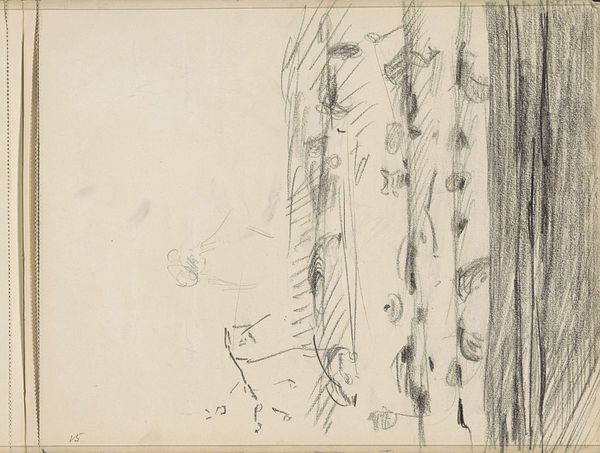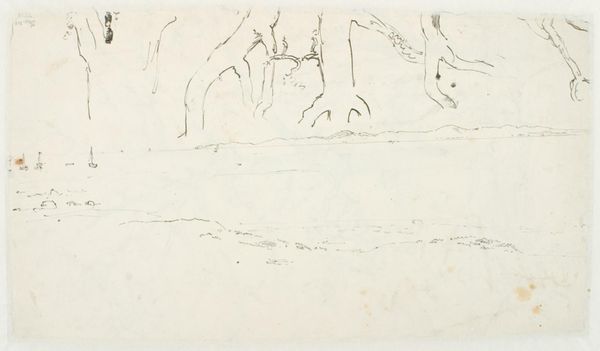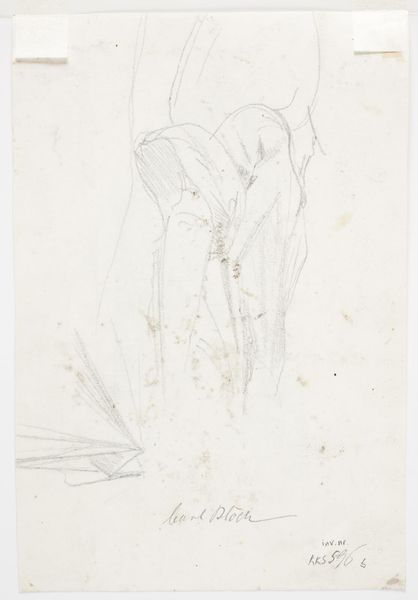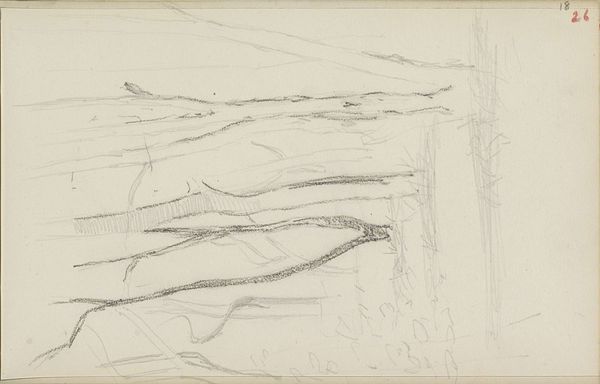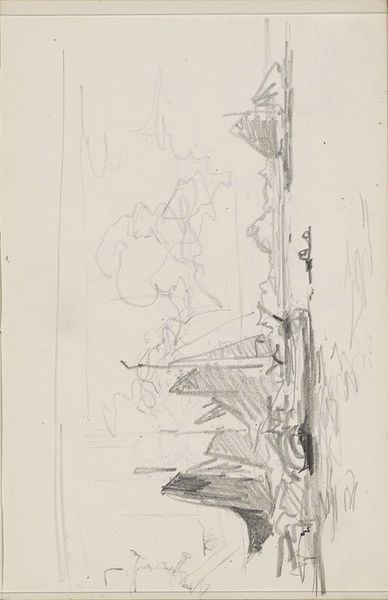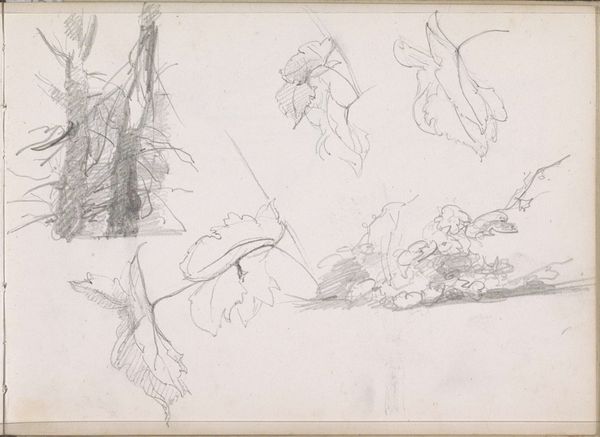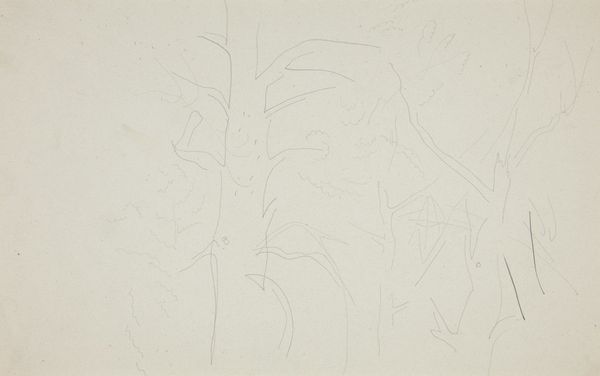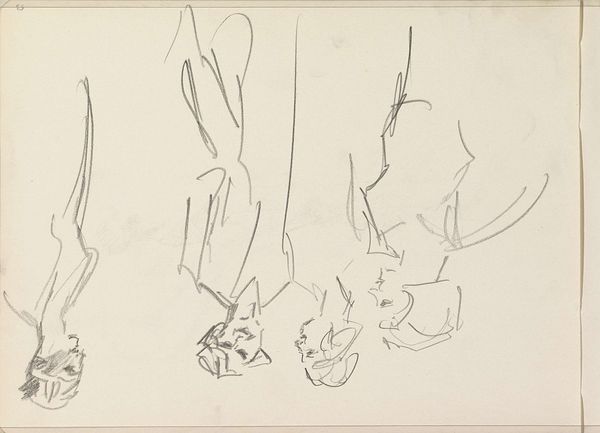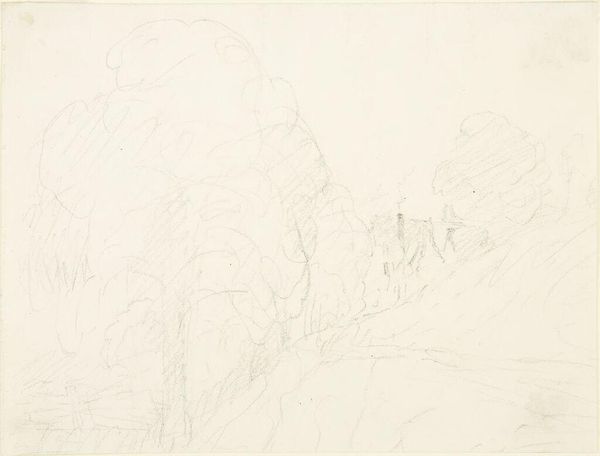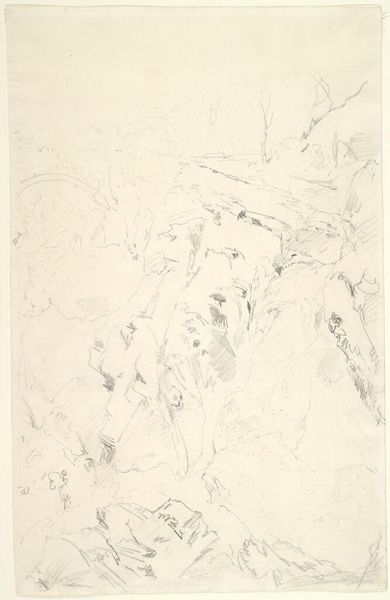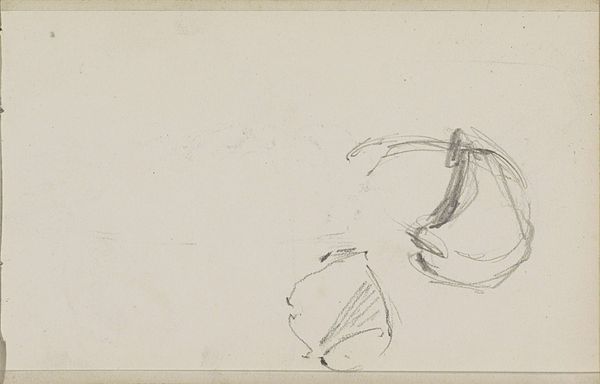
drawing, paper, pencil
#
drawing
#
landscape
#
paper
#
pencil
#
realism
Dimensions: 215 mm (height) x 323 mm (width) (bladmaal)
Editor: This is Dankvart Dreyer's "Plantestudier o.a.," a series of plant studies in pencil on paper, created between 1831 and 1852. There's a tentative, almost fleeting quality to these sketches. What strikes you about this piece? Curator: I see a record of labor, a moment in time when Dreyer engaged directly with the physical world. Consider the paper itself, the very ground upon which these plants are rendered. Its texture, its production—all hint at the material conditions of artistic creation in the 19th century. How did the accessibility of materials influence his subject matter? Editor: So, the choice of readily available plants and simple materials like pencil and paper… It speaks to accessibility, perhaps? Curator: Precisely! And beyond simple accessibility, what about the act of drawing itself? The repetitive, almost meditative act of rendering these forms suggests a connection between artistic labor and the natural world. He wasn’t painting grand narratives but intimately examining plants. What does that say about the value he placed on observation and the everyday? Editor: It makes you think about how art-making isn't always about grand gestures, but can be rooted in very humble actions, like documenting these ordinary plants. Did the intended consumer change when artmaking turned to these more basic activities? Curator: Yes, thinking about Dreyer focusing on studies implies a shift. Rather than appealing to elite patrons demanding elaborate allegories, his labor becomes self-directed, an investigation driven by curiosity. He transforms raw materials, pencil and paper, into knowledge. Don't you find this shift democratizes the artistic process? Editor: I do now. It’s not just about what is depicted, but about who can depict it and how that act of creation connects to the material world. Thank you; this was a different, valuable way of thinking about art! Curator: Indeed! Seeing the art within the materials themselves offers a fresh perspective, reminding us of the often overlooked processes behind even the simplest image.
Comments
No comments
Be the first to comment and join the conversation on the ultimate creative platform.
